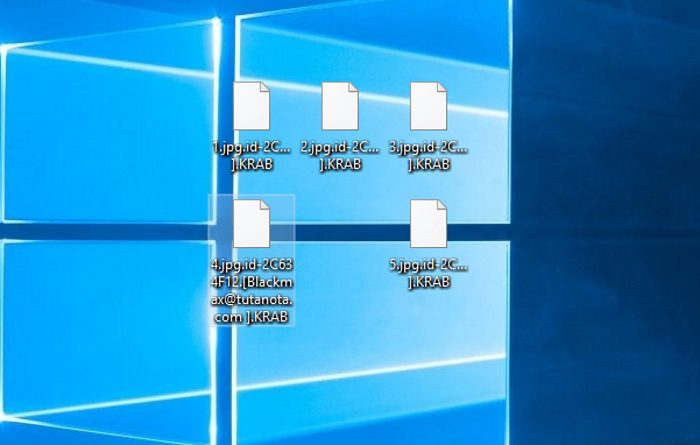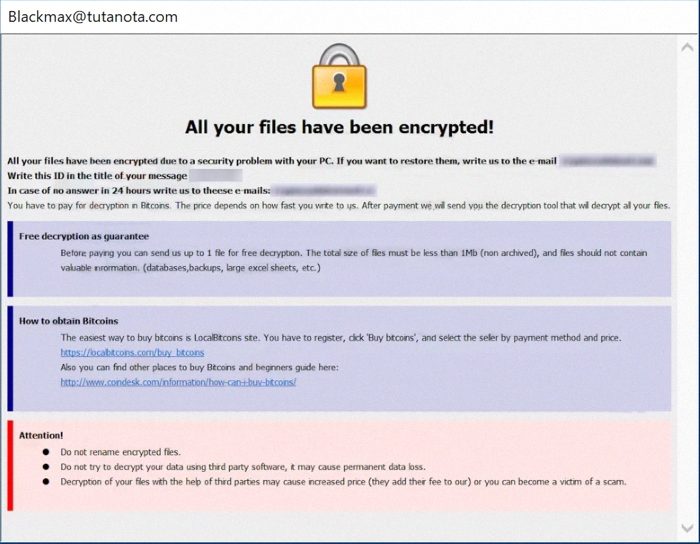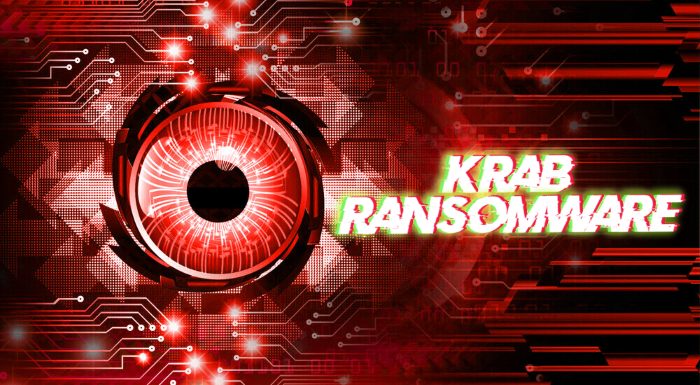KRAB ransomware encryption process
KRAB ransomware is a new type of DHARMA file-encryption ransomware. The other representatives of this family are: Oo7, Cash and Money ransomwares. KRAB ransomware uses new encryption algorithms and attacks Office documents and media files. The main purpose of this attack is to make owners of infected devices pay for the decryption services, that hackers provide. Hackers use a great variety of ways of disseminating it, but the most widely used one is email attachments. The creators of KRAB ransomware modificate a harmless file and put malicious code inside it. Once a user opens this file, KRAB begins the encryption process. If your device is already infected, don’t try to remove KRAB ransomware encryption manually. Every manipulation with an encrypted file can possibly corrupt it.

Encryption process can be subdivided into two steps. At first, the virus looks for the suitable files in all folders of your device. When it’s done, KRAB uses unique algorithms and changes the structures of the files. The results of it are always the same: the system can’t read these files and characteristic feature of the successful encryption is .id-*random*.[Blackmax@tutanota.com ].KRAB extensions, that have been added to the names of these files. Moreover, the virus creates ransom pop-up window, that contains the following information on the decryption:

The promises of the ransoms cannot be trusted, as they don’t give you any real or firm guarantee. They can easily deceive you and make the situation even worse. You can possibly get a trojan virus instead of the decryption tool, or install yourself a remote control software. However, there is another option: you can use our guide on how to remove KRAB ransomware and decrypt .id-*random*.[Blackmax@tutanota.com ].KRAB files for free!
Article’s Guide
- How to remove KRAB Ransomware from your computer
- How to remove KRAB Ransomware encryption from your files
- Data Recovery
- Automated decryption tools
- Windows Previous Versions
How to remove Oo7 Ransomware from your computer?
We strongly recommend you to use a powerful anti-malware program that has this threat in its database. It will mitigate the risks of the wrong installation, and will remove KRAB from your computer with all of its leftovers and register files.
Solution for Windows users: our choice is Norton 360 . Norton 360 scans your computer and detects various threats like KRAB, then removes it with all of the related malicious files, folders and registry keys.
If you are Mac user, we advise you to use Combo Cleaner.
How to decrypt .id-*random*.[Blackmax@tutanota.com ].KRAB files?
Once you’ve removed the virus, you are probably thinking how to decrypt .id-*random*.[Blackmax@tutanota.com ].KRAB files. Let’s take a look at possible ways of decrypting your data.
Recover data with Data Recovery

- Download and install Data Recovery
- Select drives and folders with your files, then click Scan.
- Choose all the files in a folder, then press on Restore button.
- Manage export location.
The download is an evaluation version for recovering files. To unlock all features and tools, purchase is required ($49.99-299). By clicking the button you agree to EULA and Privacy Policy. Downloading will start automatically.
Restore data with automated decryption tools
Unfortunately, due to the novelty of KRAB ransomware, there are no available automatic decryptors for this encryptor yet. Still, there is no need to invest in the malicious scheme by paying a ransom. You are able to recover files manually.
You can try to use one of these methods in order to restore your encrypted data manually.
Restore data with Windows Previous Versions
This feature is working on Windows Vista (not Home version), Windows 7 and later versions. Windows keeps copies of files and folders which you can use to restore data on your computer. In order to restore data from Windows Backup, take the following steps:
- Open My Computer and search for the folders you want to restore;
- Right-click on the folder and choose Restore previous versions option;
- The option will show you the list of all the previous copies of the folder;
- Select restore date and the option you need: Open, Copy and Restore.
Restore the system with System Restore
You can always try to use System Restore in order to roll back your system to its condition before infection infiltration. All the Windows versions include this option.
- Type restore in the Search tool;
- Click on the result;
- Choose restore point before the infection infiltration;
- Follow the on-screen instructions.
Was this tutorial helpful?[Total: 0 Average: 0]
This feature is working on Windows Vista (not Home version), Windows 7 and later versions. Windows keeps copies of files and folders which you can use to restore data on your computer. In order to restore data from Windows Backup, take the following steps:
- Open My Computer and search for the folders you want to restore;
- Right-click on the folder and choose Restore previous versions option;
- The option will show you the list of all the previous copies of the folder;
- Select restore date and the option you need: Open, Copy and Restore.
You can always try to use System Restore in order to roll back your system to its condition before infection infiltration. All the Windows versions include this option.
- Type restore in the Search tool;
- Click on the result;
- Choose restore point before the infection infiltration;
- Follow the on-screen instructions.


